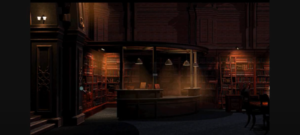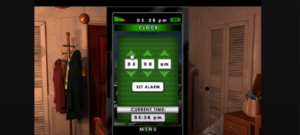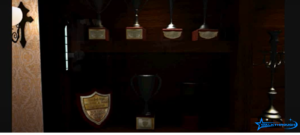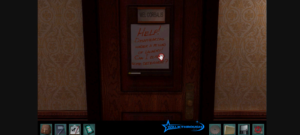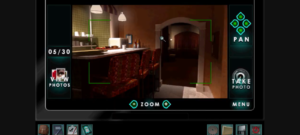Introduction
Have you hit a roadblock in Nancy Drew: Warnings at Waverly Academy while trying to complete the DNA Project puzzle? You’re not alone. This crucial mini-game sees Nancy piecing together a DNA strand by pairing nucleotides, and it’s a turning point in the mystery. In this guide, you’ll find an in‑depth, step‑by‑step DNA Project puzzle walkthrough, expert DNA puzzle tips, and even some fascinating genetics facts to keep you entertained. Whether you’re a seasoned fan of Nancy Drew games or brand‑new to the series, our comprehensive approach ensures you’ll breeze through this challenge and uncover the secrets of Waverly Academy’s most guarded project.
1. Understanding the DNA Project Puzzle
The DNA Project puzzle isn’t just a gimmick, it ties directly into the storyline. Izzy Romero, Waverly Academy’s tech whiz, needs Nancy’s help to finish her high‑school DNA research so she can unlock the academy’s encrypted files. The goal? Assemble a complete DNA strand by correctly matching nucleotides.
- Puzzle Goal: Build a double‑strand DNA helix by pairing adenine with thymine and cytosine with guanine.
- Impact on Progress: Completing this puzzle grants Nancy access to Izzy’s research portal, revealing critical clues about the school’s hidden secrets.
- Why Players Get Stuck: Misplaced pieces and overlooked color cues often lead to frustration. Our walkthrough addresses these common pitfalls.
By mastering this DNA puzzle walkthrough, you’ll not only advance the plot but also gain a deeper appreciation for how real‑world genetics inspired the game’s design.
2. How the DNA Puzzle Works
Before diving into the step‑by‑step walkthrough, let’s cover the core mechanics of the DNA Project:
- Nucleotides & Pairing Rules
- Adenine (A) pairs with Thymine (T)
- Cytosine (C) pairs with Guanine (G)
- Adenine (A) pairs with Thymine (T)
- Visual Representations
Each nucleotide appears as a colored tile with a unique shape:
| Nucleotide | Abbreviation | Pairing Partner | Color in Puzzle |
| Adenine | A | Thymine (T) | Blue |
| Thymine | T | Adenine (A) | Yellow |
| Cytosine | C | Guanine (G) | Green |
| Guanine | G | Cytosine (C) | Red |
- Fixed vs. Movable Pieces
- Fixed Pieces: Pre‑placed in the puzzle and serve as anchor points.
- Movable Pieces: Drag and drop to complete the strand.
- Fixed Pieces: Pre‑placed in the puzzle and serve as anchor points.
- Symmetry & Helix Shape
- A correct DNA strand is symmetric; once paired, the two sides twist into the classic double helix.
- A correct DNA strand is symmetric; once paired, the two sides twist into the classic double helix.
Understanding these basics ensures that our DNA Project puzzle walkthrough feels logical rather than guesswork.
3. Step‑by‑Step Walkthrough
Below is our detailed guide to conquer the DNA Project puzzle in Warnings at Waverly Academy. Follow each step closely and refer to the tables and lists for extra clarity.
Step 1: Survey the Starting Layout
- Identify Fixed Pieces: Look for nucleotides already placed in the strand. These often sit near the center.
- Mark Anchor Points: Mentally note where A, T, C, or G are locked in; these will dictate the placement of surrounding tiles.
Quick Tip: Use the fixed pieces as “north stars” , build outwards from them rather than starting randomly.
Step 2: Place the First Pairings
- Pair Around Fixed Adenine (A)
- Find the matching Thymine tile (T).
- Drag T directly opposite A to maintain symmetry.
- Find the matching Thymine tile (T).
- Locate Fixed Cytosine (C)
- Pair it with Guanine (G) on the corresponding strand.
- Pair it with Guanine (G) on the corresponding strand.
Repetition is key: Securing these first two pairings sets the tone for the rest of the puzzle.
Step 3: Fill in Mid‑Section Nucleotides
- Alternate Sides: After anchoring fixed pieces, place remaining nucleotides in an alternating fashion, left, right, left.
- Check Colors: Always verify the color‑shape combination before placement; miscoloring leads to unnecessary resets.
Visual Aid (Example Layout)
css
CopyEdit
5’ , [A] , [T] , [C] , [G] , 3’
3’ , [T] , [A] , [G] , [C] , 5’
Step 4: Complete the Strand & Verify
- Last Pairings: With most tiles positioned, the final few slots should be obvious.
- Use Symmetry Check: Compare left and right sides, they should mirror each other visually.
- Confirm Helix Formation: Upon correct completion, Nancy will animate the strands twisting into a double helix.
Common Pitfalls
| Mistake | How to Avoid |
| Misidentifying Colors | Refer to the nucleotide color table above. |
| Skipping Fixed Pieces | Always start with the anchor points first. |
| Ignoring Symmetry | Regularly pause to compare both sides. |
| Rushing Final Placements | Double‑check last two or three tiles. |
Following this DNA puzzle walkthrough will help you avoid these traps and finish the puzzle efficiently.
Must Visit Air Hockey Challenge Part 3
4. Tips for Solving the DNA Puzzle
Even with a perfect walkthrough, you might still struggle. Here are advanced DNA puzzle tips to sharpen your strategy:
- Color‑Coding Mastery
- Memorize the four puzzle colors. Rapid identification cuts placement time in half.
- Memorize the four puzzle colors. Rapid identification cuts placement time in half.
- Fixed Piece Priority
- Treat fixed nucleotides as immutable anchors. Build every sequence branch from these points.
- Treat fixed nucleotides as immutable anchors. Build every sequence branch from these points.
- Pause & Reflect
- After each three placements, pause and scan the board for asymmetries. Early corrections save resets.
- After each three placements, pause and scan the board for asymmetries. Early corrections save resets.
- Use In‑Game Hints
- Occasionally, the game offers subtle glows on the correct tile. Don’t ignore them!
- Occasionally, the game offers subtle glows on the correct tile. Don’t ignore them!
- Mind the Helix
- Picture the DNA twist: this mental model can highlight impossible placements.
- Picture the DNA twist: this mental model can highlight impossible placements.
By incorporating these DNA puzzle tips, you’ll transform a daunting mini‑game into a straightforward task.
5. Alternative Solutions & Shortcuts
If you find yourself stuck on the DNA Project puzzle, consider these shortcuts:
- Reset Strategy:
- Click the reset icon.
- Immediately place the two fixed pairs again.
- Use the reset momentum to streamline your process.
- Click the reset icon.
- Corner‑Run Technique:
Start by pairing corner nucleotides first, this often reduces the number of movable pieces dramatically. - Hint Exploitation:
Some versions of the puzzle allow you to click “hint” twice to auto‑place a pair. Use sparingly if you’re desperate.
These workarounds aren’t “cheats,” but they can rescue you from potential frustration.
6. Fun Facts about DNA and Genetics
To make your DNA Project experience even richer, here are a few captivating DNA facts:
- Human Genome: The entire human genome contains over 3 billion base pairs, imagine a puzzle with that many pieces!
- Discovery of DNA Structure: James Watson and Francis Crick deciphered the double helix in 1953, a landmark in biology.
- Every Cell’s Copy: Nearly every cell in your body has its own complete DNA strand, similar to how each puzzle strand holds full information.
- CRISPR Revolution: Modern DNA editing tool CRISPR allows scientists to cut and paste genetic sequences, akin to dragging tiles in our game puzzle.
Understanding these real‑world parallels deepens the appreciation for how Warnings at Waverly Academy integrates genuine science into its DNA Project puzzle design.
7. FAQs
Q1: What happens if I fail the DNA puzzle?
You can retry as many times as needed, there’s no penalty beyond delay.
Q2: How many attempts can I make?
Unlimited. Use practice to improve speed and accuracy.
Q3: Do I earn extra rewards for solving quickly?
No timed bonuses, but swift completion keeps the story flow engaging.
Q4: Can I skip this puzzle?
No, this mini‑game is mandatory to advance the plot and access Izzy’s research.
Q5: Are there different difficulty levels?
The puzzle difficulty is fixed, but your own strategy can make it feel easier or harder.
These FAQs address common questions and ensure you’re fully prepared.
8. Visual Aids & Screenshots
While this guide is text‑based, you may want to capture these visuals in your own reference:
| Image / Diagram | Description |
| Starting Layout Screenshot | Shows all fixed pieces and empty slots. |
| Mid‑Puzzle Pairings Diagram | Illustrates the first two completed nucleotide pairs. |
| Completed Strand Image | Demonstrates the fully assembled DNA double helix. |
| Common Mistake Highlight | Highlights a mispaired nucleotide for comparison. |
Pro Tip: Annotate your screenshots with arrows and labels using any image editor, this will reinforce your learning.
9. Conclusion
The DNA Project puzzle walkthrough in Nancy Drew: Warnings at Waverly Academy combines logical thinking with an appreciation for real genetics. By following our step‑by‑step guide, applying expert DNA puzzle tips, and exploring fascinating DNA facts, you’ll conquer this mini‑game with confidence. Remember: patience, symmetry checks, and color‑coding are your best friends. Now, gear up, dive back into Waverly Academy, and unlock the mysteries hidden within Izzy’s research!

